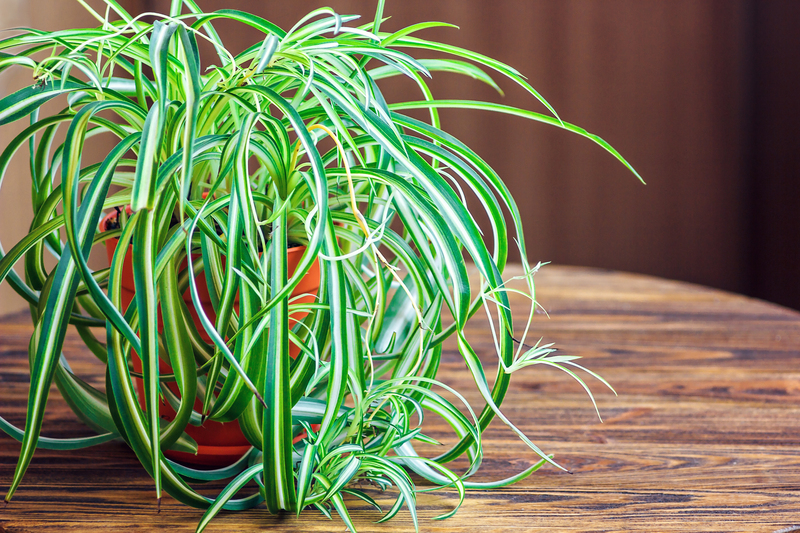Tips for Readying Your Garden in Spring
Posted on 07/01/2025
Spring is the perfect time of year to prep your garden for a thriving growing season. After the long winter months, your garden needs some careful attention to ensure it blooms beautifully. Whether you are a seasoned gardener or a novice, here are some essential tips to help you get your garden ready for spring.
1. Clean Up Your Garden
The first step in preparing your garden for spring is to clean up any debris that has accumulated over the winter. Remove dead leaves, broken branches, and any other debris that may have settled in your garden beds. This will not only improve the appearance of your garden but also prevent pests and diseases from taking hold.

2. Test Your Soil
It is vital to test the pH levels and nutrient content of your soil before planting. This can be done with a simple soil testing kit available at most garden centers. Based on the results, you can amend your soil by adding compost, lime, or other necessary nutrients to ensure it is well-suited for your plants.
3. Prune Shrubs and Trees
Pruning is a crucial task before new growth begins. Trim back overgrown shrubs and remove any dead or damaged branches from trees. This will help stimulate new growth and improve the overall health of your plants. Be sure to use sharp pruning tools to make clean cuts.
4. Prepare Your Garden Beds
Turn over the soil in your garden beds to break up compacted earth and improve drainage. You can also add organic matter such as compost or manure to enrich the soil and promote healthy plant growth. Rake the soil to create a smooth, level surface for planting.
5. Start Seeds Indoors
If you want a head start on your gardening, consider starting seeds indoors. This is especially useful for plants that require a longer growing season. Use seed trays or small pots filled with seed-starting mix and place them in a warm, sunny spot. Once the seedlings have grown strong enough, they can be transplanted into your garden.
6. Plan Your Garden Layout
Before planting, take the time to plan the layout of your garden. Consider the amount of sunlight each area receives and group plants with similar water and light requirements together. This not only ensures that your plants will thrive but also makes maintaining your garden much easier.
7. Mulch Your Garden
Mulching is an essential step in spring garden preparation. Apply a layer of mulch around your plants to help retain moisture, suppress weeds, and regulate soil temperature. Organic mulches such as wood chips, straw, or leaves are excellent choices for providing nutrients as they decompose.
8. Water Wisely
Proper watering is key to a healthy garden. Water your plants early in the morning to reduce evaporation and prevent fungal diseases. Be mindful not to overwater; the soil should be moist but not waterlogged. Consider installing a drip irrigation system to provide consistent moisture directly to the roots of your plants.
9. Fertilize Appropriately
Fertilizing your plants provides them with the essential nutrients they need for growth. Choose a balanced, slow-release fertilizer and apply it according to the instructions on the package. Be careful not to over-fertilize, as this can harm your plants and lead to nutrient runoff.
10. Monitor for Pests
Warmer weather can bring an influx of pests to your garden. Regularly inspect your plants for signs of pests such as aphids, slugs, or caterpillars. Use natural pest control methods, such as introducing beneficial insects like ladybugs or applying organic insecticides, to keep them in check.
Pros and Cons
Readying your garden in spring comes with several benefits and a few challenges:
Pros:
- Boosts plant growth and health
- Prevents pests and diseases
- Improves appearance of your garden
- Ensures better yield and stronger plants
Cons:
- Time-consuming and labor-intensive
- Requires knowledge and proper planning
- Initial costs for soil amendments and tools
Tips
- Keep a gardening journal to track your plants' progress and note what works best.
- Invest in quality tools to make your gardening tasks easier and more efficient.
- Stay updated on the latest gardening techniques and try new plants each season.

Takeaways
Preparing your garden for spring involves several key steps, including cleaning up, testing soil, pruning, and planning your garden layout. By following these tips and putting in the effort, you can ensure a healthy and vibrant garden throughout the growing season.
Conclusion
Readying your garden for spring may seem like a daunting task, but it is well worth the effort. By taking the time to clean, prepare, and plan, you set the stage for a beautiful and productive garden. Remember to be patient and consistent with your gardening practices, and enjoy the process of watching your plants grow and flourish.



